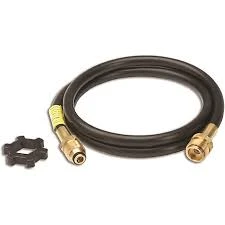335345435
Set . 15, 2024 05:43 Back to list
High Pressure Hose Fittings Types - Comprehensive Guide
Understanding High Pressure Hose Fittings Types
High pressure hose fittings are essential components in various industrial applications, especially in hydraulic systems, pneumatic tools, and high-pressure washing equipment. These fittings ensure a secure connection between hoses and machinery, allowing fluid transfer at elevated pressures. Understanding the different types of high pressure hose fittings is crucial for selecting the right components for any specific application.
Types of High Pressure Hose Fittings
1. Swivel Fittings Swivel fittings are designed to allow rotation without twisting the hose. This feature is particularly useful in applications where hoses need to move or bend frequently. These fittings typically have a male part and a female part that can rotate around each other, making them ideal for dynamic environments.
2. Quick Couplers Quick couplers enable fast and easy connection and disconnection of hoses without the need for tools. They are commonly used in hydraulic systems where equipment needs to be frequently connected or disconnected. These fittings are designed to offer a tight seal even under high pressure, preventing leaks and maintaining system efficiency.
3. Threaded Fittings Threaded fittings come in various types, including NPT (National Pipe Thread), BSP (British Standard Pipe), and metric threads. These fittings provide a secure connection through threaded engagement, making them suitable for permanent installations or applications where hoses may not need to be disconnected often. It's vital to select the appropriate thread type for compatibility with existing systems.
high pressure hose fittings types

4. Crimp Fittings Crimp fittings are attached to hoses using a crimping tool, which compresses the fitting onto the hose, creating a strong bond. This type of fitting is widely used in high-pressure applications where reliability and strength are crucial. Crimp fittings are available in various designs, accommodating different hose diameters and pressure ratings.
5. Barbed Fittings Barbed fittings feature ridges that secure the hose in place once it's pushed onto the fitting. While they are commonly used in low-pressure applications, certain designs can withstand higher pressures as well. It's essential to ensure that the correct hose clamps are used with barbed fittings to prevent hose slippage.
6. Cam and Groove Fittings Also known as camlock fittings, these are used for quick connections in various fluid transfer applications. They consist of two parts a male adapter that fits into a female coupler. A simple cam lever action locks the connection, making it easy to disconnect when needed. Due to their quick connect and disconnect capabilities, they are popular in food and beverage, chemical, and agricultural industries.
Choosing the Right Fitting
Selecting the appropriate high pressure hose fitting requires consideration of several factors, including the type of fluid being transferred, the operating pressure, temperature, and the specific application needs. It's essential to ensure compatibility between the hose and the fitting to avoid leaks or failures.
In conclusion, understanding the various types of high pressure hose fittings is vital for ensuring the efficiency and safety of fluid transfer systems. By selecting the appropriate fittings based on the specific requirements of an application, one can enhance system performance and reduce the risk of failure.
-
SAE 100 R17 Black Smooth Cover Hydraulic Hose
NewsMar.07,2025
-
SAE 100 R17 Black Smooth Cover Hydraulic Hose
NewsMar.07,2025
-
SAE 100 R17 Black Smooth Cover Hydraulic Hose
NewsMar.07,2025
-
SAE 100 R17 Black Smooth Cover Hydraulic Hose
NewsMar.07,2025
-
SAE 100 R17 Black Smooth Cover Hydraulic Hose
NewsMar.07,2025
-
steel wire braided hydraulic hose
NewsMar.07,2025



